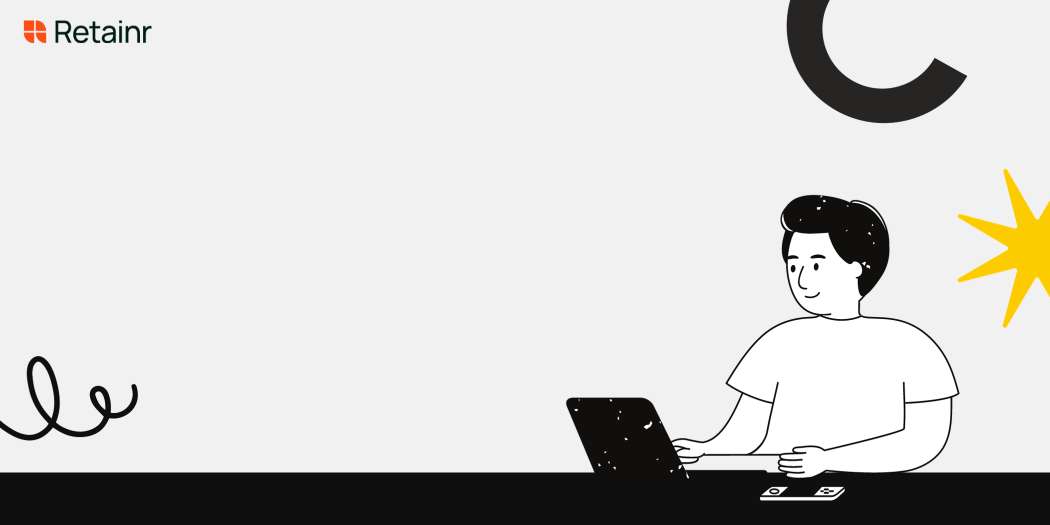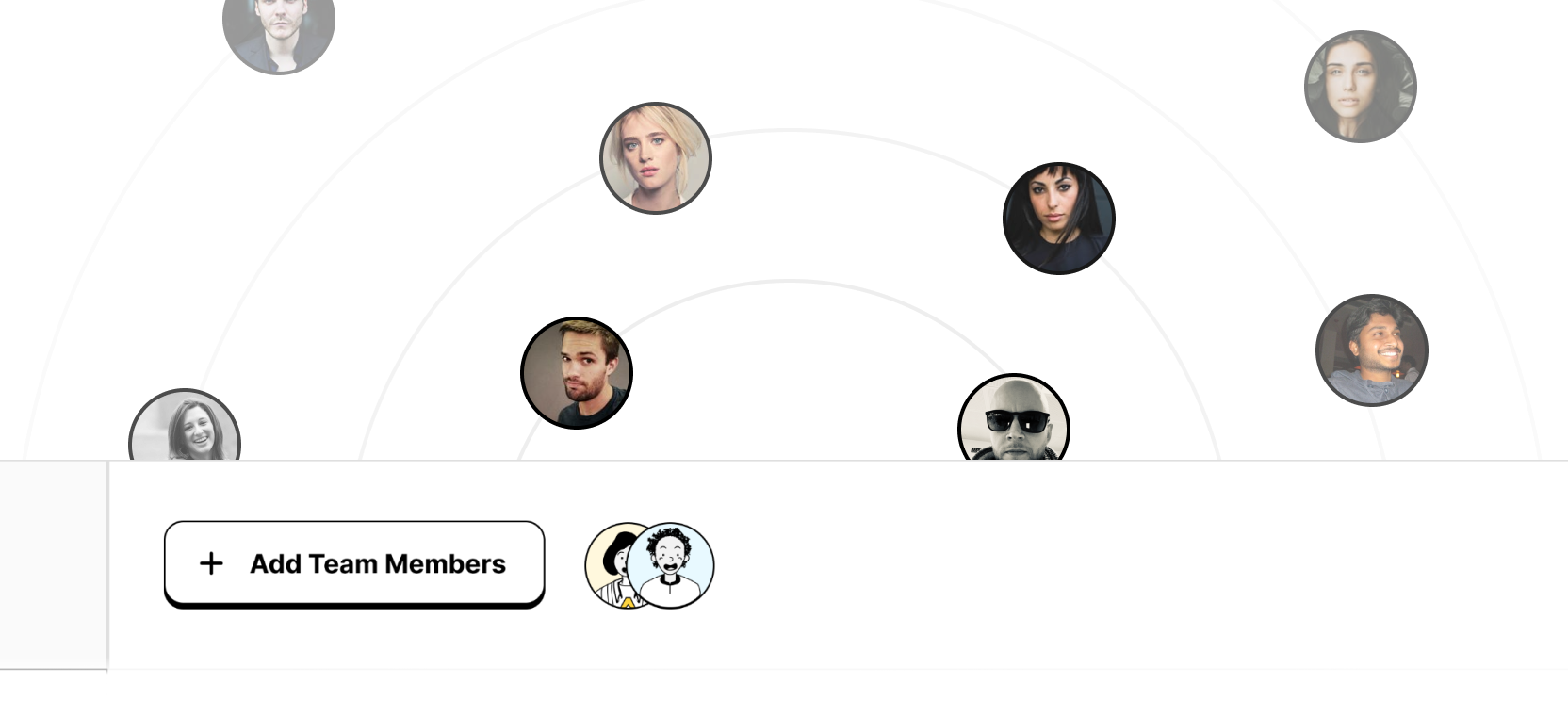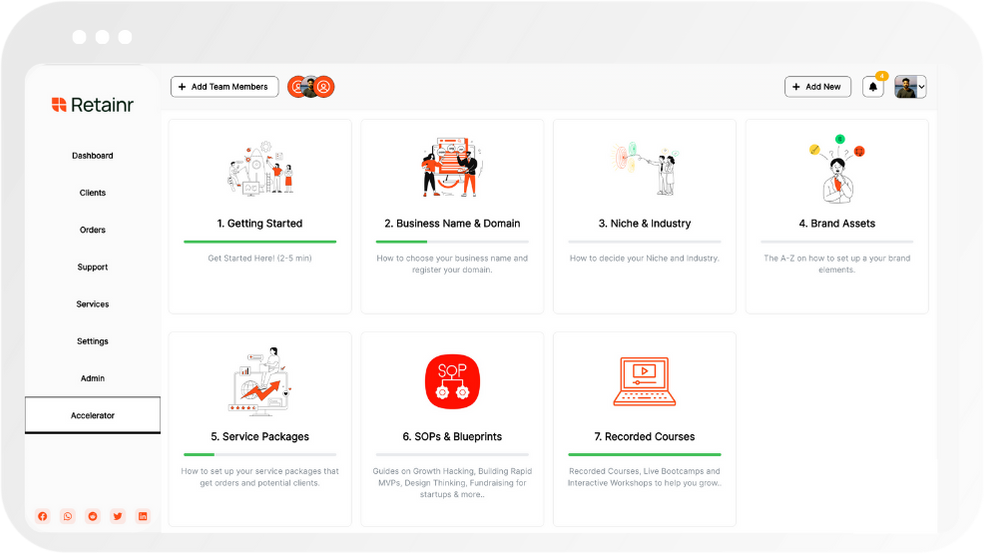
Remote Work Productivity: Balancing Autonomy and Accountability for Optimal Performance
Build with Retainr
Sell your products and services, manage clients, orders, payments, automate your client onboarding and management with your own branded web application.
Get Started1. How can I maintain high productivity while working remotely?
Maintaining High Productivity
Being productive while working remotely can be a challenge, but certainly not an insurmountable one. Here are some strategies that you can implement:
- Set a routine: Establish a clear and consistent work schedule. On a table or calendar, mark out your working hours, breaks, and non-working hours.
- Have a dedicated workspace: This helps your mind associate the space with work, thereby aiding concentration.
- Limit distractions: Turn off unnecessary notifications on your digital devices and let family or roommates know your work hours to avoid interruptions.
- Take regular breaks: Ensure you have short, frequent breaks to clear the mind and rest the eyes.
- Use productivity tools: Use digital tools like Trello, Slack, and Asana to stay organized and keep track of your tasks.
Balancing Autonomy and Accountability
When working remotely, striking a balance between autonomy and accountability is crucial for optimal performance. Here's how:
- Set clear expectations: Have a clear understanding of your tasks, deadlines, and objectives.
- Regular Check-ins: Regularly report to your manager or team on your progress to stay accountable.
- Establish Trust: Show your reliability by consistently delivering quality work on time.
- Uphold Transparency: Ensure open communication and transparency with your team.
Remote Work Productivity Table
| Parameters | Strategies |
|---|---|
| Setting a routine | Establish a consistent work schedule. |
| Managing Distractions | Turn off unnecessary digital notifications. |
| Taking Regular breaks | Have short, frequent breaks to rest the eyes and clear the mind. |
| Using Productivity Tools | Use digital tools like Trello to stay organized and keep track of tasks. |
2. How can we balance autonomy and accountability in a remote work setup?
Autonomy and Accountability in a Remote Work Setup
Navigating a remote work environment can be quite a challenge, especially when it comes to striking a balance between providing employees with autonomy and holding them accountable for their tasks. Here are some things to consider:
- Communication: Regular and open communication is a key factor in remote work setup. This can be done through regular check-ins, video conferencing and project management tools to help keep everyone in the loop.
- Empowerment: Empowering team members by giving them the resources they need, including technology tools and opportunities for professional development, can increase their sense of autonomy and boost productivity.
- Clarify Obligations: Defining obligations and expectations clearly makes it easier to hold employees accountable. Define deadlines, deliverables, and quality standards at the onset.
- Trust: Fostering a trusting environment encourages a practice of autonomy. Instil a sense of responsibility and trust in the team's capabilities.
| Autonomy factors | Approaches |
|---|---|
| Communication | Regular check-ins, video conferencing |
| Empowerment | Provide essential tools, training |
| Clarify Obligations | Define deadlines, quality standards |
| Trust | Foster a trusting, responsible environment |
By maintaining a balance between autonomy and accountability among teams, companies can ensure high productivity levels while also developing a team's self-management skills. This, in turn, leads to improved performance, job satisfaction, and positive company culture.
3. What are the best practices for optimizing performance in remote work?
Efficient Organizational Tools and Communication Channels
The optimization of remote work performance is largely reliant on the use of efficient organizational tools and clear communication channels. Popular tools like Trello, Asana or Monday.com can significantly enhance team collaboration and project management. Additionally, communication channels such as Slack, Microsoft Teams or Zoom help in facilitating quick and clear communication among remote teams.
- Trello: Simple, user-friendly platform for task assignment and project progress tracking.
- Asana: Highly customizable tool that provides a comprehensive overview of the team’s workload.
- Monday.com: Visually appealing and intuitive project management tool with ample features.
- Slack: Robust communication channel that allows easy organization of conversations into different channels.
- Microsoft Teams: Integrated communication platform for video meetings, chat and file sharing.
- Zoom: A reliable tool for video conferencing with screen sharing and recording features.
Flexible Working Hours and Routine Breaks
An important aspect of remote work is the ability to have flexible working hours. Allowing employees to work according to their most productive hours can greatly enhance performance. Additionally, encouraging regular breaks to relax and refresh can also result in better productivity and work quality.
| Flexible Working Hours | Regular Breaks |
|---|---|
| Allows employees to work when they are the most mentally alert and productive. | Helps to avoid burnout and maintain mental health. |
| Can accommodate different time zones in a global team. | Short regular breaks can increase focus and productivity. |
Maintaining Professional Environment
Remote work should maintain a level of professionalism equivalent to office settings. This can be done by setting up a dedicated workspace, maintaining regular working times and ensuring good working conditions. Key to this is a stable internet connection, a functional writing desk and any other resources required to perform tasks effectively.
- Dedicated Workspace: A specific area for work can lead to better focus and productivity.
- Regular Working Times: Maintaining a regular routine can enhance time management and project execution.
- Good Working Conditions: Ensuring a comfortable temperature, good lighting, and a quiet environment can all contribute to more efficient work.
4. Can autonomy at work improve productivity? How?
Can Autonomy at Work Improve Productivity?
The autonomy at work can significantly enhance productivity in various ways. Primarily, when employees are given the freedom to manage their tasks, it promotes a sense of responsibility and empowers them to make important decisions. Here's how:
- Flexibility: Autonomy allows employees to choose the methods and timelines that work best for them. As they don't feel pressured to follow a stringent timeline, they can work when they're most productive.
- Increased Morale: With autonomy, employees feel trusted and appreciated, which boosts their morale, and in turn their productivity.
- Improved Job Satisfaction: Employees enjoy their job when they have the freedom to make decisions. This leads to increased job satisfaction and lesser turnover, indirectly improving productivity.
Striking the Right Balance
While autonomy can greatly improve productivity, it's equally important to maintain accountability. Employees need to understand that with freedom comes responsibility. Striking the right balance between autonomy and accountability is the key to maximize productivity. See below for an ideal balance:
| Autonomy | Accountability |
|---|---|
| Employees have the freedom to manage their work and decisions. | Employees are held accountable for their actions and decisions. |
| Encourages creativity and innovation. | Maintains a sense of responsibility and adherence to the organization's goals. |
| Boosts employee morale and satisfaction. | Keeps the team on track and ensures the work aligns with the expected outcomes. |
The Impact on Remote Work Productivity
In the remote work setup, the need for autonomy increases, as employees are spread across different locations and time zones. Autonomy and accountability thus play an even greater role in driving productivity. Here's how:
- Flexible Work Hours: With autonomy, remote workers can set their own work hours, taking advantage of their peak productivity times.
- Overcommunication: Despite the physical distance, accountability ensures that all remote workers stay connected and communicate effectively.
- Goal Setting: Regular goal setting and reviews ensure everyone is aligned with the team's objectives, maintaining accountability, and ultimately productivity.
5. How to maintain accountability in a remote work environment?
Maintaining Accountability in a Remote Work Environment
Maintaining accountability in a remote work environment is paramount if an organization aims to maximize productivity and efficiencies. This is most achievable through communication, performance measurement, and creating a trust-based culture. Following are the key ways through which accountability can be promoted and maintained:
- Regular Check-ins: This can involve weekly or daily meetings or status check-ins to ensure all team members are on the same page.
- Clear Expectations: Clear and concise communication regarding organizational expectations, roles and responsibilities helps in mitigating confusion and promotes accountability.
- Performance Metrics: Having established metrics and performance indicators allows for objective evaluation of each team member.
- Result-Oriented Culture: Encouraging a culture focused on end results rather than hours put in can also foster accountability.
Role of Technology in Maintaining Accountability
Technology plays an integral role in managing and promoting accountability in a remote work setup. Through various digital tools and platforms, businesses can track productivity, monitor progress, and facilitate effective communication. The table below summarizes some popular tools that companies commonly use:
| Tool | Functionality |
|---|---|
| Slack | This platform allows for seamless communication between team members and different departments. |
| Asana | Asana helps in task management, enabling teams to organize, track, and manage their work. |
| Zoom | Zoom facilitates virtual meetings, allowing for face-to-face interaction and collaboration. |
| Google Drive | Google Drive provides a convenient platform for storing and sharing work documents and files. |
Building a Trust-based Culture for Accountability
Trust is a crucial component in fostering accountability within a remote work environment. When employees feel trusted, they are more likely to take ownership of their work and be accountable for their output. To build this trust-based culture, organizations can:
- Provide autonomy - Allow employees to manage their schedules and work in ways that best suit their productivity.
- Show empathy - Understand the challenges faced by employees in remote work and provide suitable support and flexibility.
- Empower employees - Encourage employees to make decisions and provide the necessary support and resources for them to carry out their tasks effectively.
- Recognize and appreciate - Acknowledge the efforts and accomplishments of team members to boost morale and encourage accountability.
6. What are the challenges in maintaining productivity when working remotely?
Challenges in Maintaining Productivity in Remote Work
Working remotely poses several productivity challenges. One of the most significant challenges is the blurring of work-life boundaries. Without the structure provided by a traditional office setting, employees may struggle to manage their time effectively. Here are some common challenges:
- Distractions: At home, distractions like household chores, pets, and television can be very enticing. These distractions can significantly impact an employee's focus and productivity.
- Lack of Supervision: Remote work often means less direct supervision from managers. This lack of oversight can lead to reduced accountability and potentially decreases in productivity.
- Communication Issues: Even with modern technology, communicating effectively can be difficult when working remotely. Miscommunication can lead to decreased productivity.
Maintaining Balance to Optimize Productivity
Considering these challenges, it's critical to maintain a healthy balance between autonomy and accountability. Here are some measures that can be adopted:
| Strategy | Description |
|---|---|
| Set Clear Expectations | Having clear expectations can help employee understand what is required of them and motivate them to work productively. |
| Incorporate Effective Tools | Utilizing project management and communication tools can improve collaboration and minimize miscommunication, ensuring tasks are completed effectively. |
| Encourage Regular Breaks | Encouraging employees to take regular breaks can help them rest and recharge, ultimately aiding in maintaining productivity levels. |
Conclusion
In conclusion, working remotely presents unique challenges. While employees can enjoy greater flexibility and independence, it's important to balance this autonomy with clear expectations, communication, and regular breaks for optimal productivity.
7. What tools can be used to monitor and improve remote work productivity?
Tools for Monitoring and Enhancing Remote Productivity
There are numerous tools that can monitor and improve remote work productivity. These tools offer various capabilities like project and task management, time tracking, communication, and even real-time monitoring. By using these tools, companies can maintain a balance between autonomy and accountability to achieve optimal performance in remote work settings.
- Project and Task Management Tools: These help in organizing, tracking, and prioritizing work. Examples include Trello, Asana, and Jira. They provide a clear visualization of tasks, deadlines, and progress, enabling teams to work proactively and goals to be reached systematically.
- Time-Tracking Tools: Examples include Time Doctor, Toggl, and Rescue Time. These tools can provide insights into how much time is spent on different tasks, helping identify work patterns and areas for improvement.
- Communication Tools: Effective communication is key to remote work success. Tools such as Slack, Microsoft Teams, or Zoom enable instant communication and collaboration among team members.
- Screen Monitoring Tools: Examples include ActivTrak and Time Doctor. They offer real-time monitoring features which can be used judiciously to ensure accountability without infringing too heavily on workers' autonomy.
It's crucial to understand that productivity is not just about constant monitoring but about creating an environment where teams can work effectively and efficiently. It's important to respect workers' autonomy and integrate these tools in a way that boosts morale and motivates individuals. The table below summarises these tools with their respective functionalities.
| Tool Typology | Examples | Function |
|---|---|---|
| Project and Task Management Tools | Trello, Asana, Jira | Organizing, tracking, and prioritizing work |
| Time-Tracking Tools | Time Doctor, Toggl, Rescue Time | Provide insights into how much time is spent on different tasks |
| Communication Tools | Slack, Microsoft Teams, Zoom | Enable instant communication and collaboration among team members |
| Screen Monitoring Tools | ActivTrak, Time Doctor | Offer real-time monitoring to ensure accountability |
8. How to communicate expectations and tasks to remote employees effectively for higher productivity?
Clarifying Expectations and Tasks
Effective communication of expectations and tasks for remote employees is critical in ensuring high productivity. This could be achieved by:
- Setting measurable objectives: Clearly define what successful performance looks like. This should include specific details about expectations such as deliverables, deadlines, and quality of work.
- Creating a comprehensive task list: Outline tasks for remote employees in advance. Use project management tools to track and update the progress of the tasks.
- Establishing clear communication channels: Specify how and when remote employees should communicate their progress and any difficulties they encounter. Use tools and platforms that facilitate real-time and asynchronous communication.
Optimizing Productivity Through Autonomy
With a clear understanding of tasks and expectations, remote employees can optimize their productivity through autonomy. This involves:
- Flexible work schedules: Allow remote employees to set their own work hours, considering peak productivity times and work-life balance.
- Encouraging independent decision making: Foster a culture where remote employees can make decisions related to their tasks and responsibilities independently.
- Empowering self-management: Provide resources and strategies for remote employees to manage their own time and workload effectively.
Accountability Measures
While autonomy is important, maintaining accountability among remote employees is crucial in ensuring optimal performance. This can be done by:
| Accountability Measures | Description |
|---|---|
| Regular Check-ins and Updates | Ask remote employees to provide regular updates on their progress - this could be through daily or weekly reports, or through scheduled meetings. |
| Performance Metrics | Use specific metrics to measure the performance of each remote employee. This can include things like task completion rate, quality of work, or response times. |
| Feedback Sessions | Hold regular feedback sessions with remote employees to discuss their performance and potential areas for improvement. |
9. How to manage and distribute workload among remote working team members for optimal performance?
Managing Workload Distribution for Optimal Performance
Managing workload for optimal performance among remote team members requires an understanding of each individual's capabilities, communication about expectations, and frequent check-ins. A good practice is to:
- Distribute tasks based on individual strengths and skills.
- Ensure each member understands their role and has access to necessary resources.
- Regularly check on progress, provide feedback, and adjust workload as necessary.
Maintaining Accountability in Remote Work
Accountability is key for optimal performance in remote work. It involves ensuring that team members fulfill their responsibilities within set timelines and objectives. To maintain accountability, managers should:
- Set clearly-defined goals and timelines for each task.
- Use project management tools that allow tracking of progress and deadlines.
- Hold regular team meetings to discuss progress, challenges, and adjustments.
Tools for Managing Remote Work and Performance
Various online tools can assist in managing remote work and enhancing productivity. These include project management software, communication platforms, and time tracking tools. Here are a few examples of each:
| Project Management Tools | Communication Platforms | Time Tracking Tools |
|---|---|---|
| Asana | Slack | Toggl |
| Trello | Microsoft Teams | Time Doctor |
| Jira | Zoom | Harvest |
10. How to deal with distraction and maintain focus for productivity while working remotely?
Dealing with Distraction
While working remotely, distractions are inevitable - it might be your kids, pets, household task, noise or even the temptations of your bed or Netflix. Here are some strategies to deal with distractions:
- Create a designated workspace: Having a specific area for work, away from distractions, can help your mind to associate that space with focus and productivity.
- Schedule fixed hours: Set work hours like you would do in an office setting. This can help maintain discipline and prevent procrastination.
- Use noise-cancelling headphones: To drown out ambient noise, consider using noise-cancelling headphones or listen to white noise or instrumental music.
- Keep mobile devices away: Notifications from mobile apps can be a major distraction. Keep your phone away or turn off notifications during work hours.
Maintaining Focus for Productivity
Productivity isn't just about avoiding distractions, it also requires maintaining focus and preserving energy. Here are some tips to help you stay centered and productive:
- Use productivity apps: There are numerous tools and apps designed to enhance productivity by helping you manage tasks, set reminders, and block distractions. Examples include Todoist, Toggl and Freedom.
- Take short breaks: The Pomodoro Technique involves working for 25 minutes, then taking a five-minute break. This can help keep your brain fresh and focused.
- Stay hydrated and nourished: Dehydration and hunger can decrease your concentration levels. Make sure to have water and healthy snacks on hand.
- Practice mindfulness: Techniques such as meditation and deep-breathing can help calm the mind and improve focus.
A Comparative Snapshot
| Dealing with Distraction | Maintaining Focus for Productivity | |
|---|---|---|
| 1 | Create a designated workspace | Use productivity apps |
| 2 | Schedule fixed hours | Take short breaks |
| 3 | Use noise-cancelling headphones | Stay hydrated and nourished |
| 4 | Keep mobile devices away | Practice mindfulness |
Conclusion
Maximizing Remote Work Productivity
As more businesses transition to remote work due to the global climate, it's critical to strike the right balance between worker autonomy and management accountability. Given that remote work usually translates to flexible schedules, it can be tempting to allow too much autonomy. However, it's crucial to maintain adequate oversight and accountability mechanisms to maintain productivity.
Navigating Autonomy
Diminishing worker autonomy can generate problems such as micromanagement and erode trust. It’s crucial to provide proper training, clear expectations, and defined roles, allowing employees to manage their workload autonomously. This, in turn, allows them to work at their pace and increase their work satisfaction.
Maintaining Accountability
While autonomy is important, accountability should not be disregarded. Teams need to be held responsible for their tasks and goals. Regular check-ins, feedback, and reviews help reinforce accountability. It also helps managers understand the areas that require improvement in the remote work setup and provide support where it's needed.
Innovative Tools for Optimal Performance
Balancing Autonomy and accountability becomes easy when you have the right tools at your disposal. Companies are embracing innovative software solutions that streamline operations and enhance efficiency. With tools like Retainr.io, selling, managing clients, processing orders and payments is a breeze.
Enhance Performance with Retainr.io
Retainr.io is a cutting-edge, whitelabel software designed to help businesses maximize productivity by facilitating easy management of clients, orders, and payments. Offering the convenience of your own branded app, it provides a consolidated platform to streamline operations and boost productivity. Whether you're managing a remote team or onsite, Retainr.io simplifies the complexities of business management, freeing up your time to focus on other strategic areas of your business.
Empower Your Business Today
Your solution to a more efficient remote work setup is just a click away, visit www.retainr.io to discover how you can transform your operations for optimal performance and profitability in the remote work era.
Boost Your Agency Growth
with Retainr Accelerator
Uncover secrets, strategies, and exclusive blueprints to take your agency's growth to the next level — from marketing insights to effective presentations and leveraging technology.

SOPs, Cheatsheets & Blueprints
Leverage 50+ SOPs (valued over $10K) offering practical guides, scripts, tools, hacks, templates, and cheat sheets to fast-track your startup's growth.
Connect with fellow entrepreneurs, share experiences, and get expert insights within our exclusive Facebook community.
.jpg)

Join a thriving community of growth hackers. Network, collaborate, and learn from like-minded entrepreneurs on a lifelong journey to success.

Gain expertise with recorded Courses, Live Bootcamps and interactive Workshops on topics like growth hacking, copywriting, no-code funnel building, performance marketing and more, taught by seasoned coaches & industry experts.

.jpg)

.jpeg)


